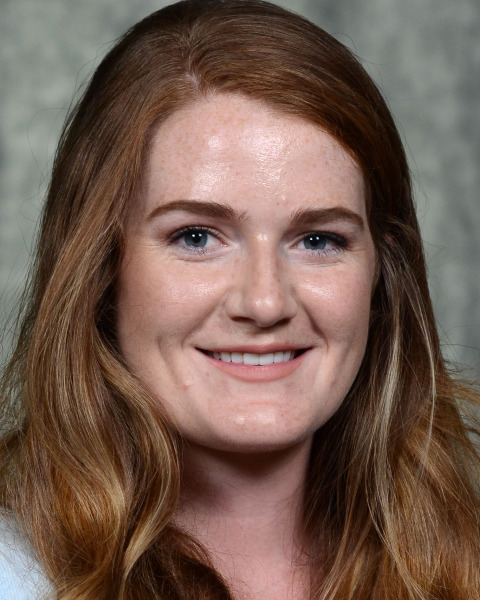Back
There are separate poster presentation times for odd and even posters.
Odd poster #s – first hour
Even poster #s – second hour
Co-authors:
Virtual Posters
Poster: Virtual Posters
An Evaluation of Medical Students' Retention of Pathology After Integration in Anatomy Lab
Friday, March 22, 2024
12:00pm – 7:00pm US EDT
Location: Virtual
There are separate poster presentation times for odd and even posters.
Odd poster #s – first hour
Even poster #s – second hour
Co-authors:
John Dobson, MD - Department of Pathology and Anatomical Sciences - Kansas City University; Morgan McBride - Kansas City University; George Kalu - Kansas City University; Cameron Smith - Kansas City University; Makayla Swancutt - Kansas City University; Jennifer Dennis, PhD - Chair, Department of Pathology and Anatomical Sciences, Kansas City University

Ginger Chant, MS
Medical Student
Kansas City University
Kansas City University
Kansas City, Missouri, United States
Presenting Author(s)
Abstract Body : Introduction and Objective: The literature has shown benefit of cadaver dissection in the study of pathology, highlighting the integration of anatomy and pathology in the medical school curriculum (Geldenhuys et al., 2016). The preclinical curriculum at Kansas City University includes anatomy and pathology content delivered as two separate entities: anatomy occurs during the first year and pathology occurs during the second year. This study was designed to assess the integration of pathology in the gross anatomy lab during the first-year of medical school to further the understanding of pathological processes and their link to anatomy. Our hypothesis was that early exposure to pathology in the gross anatomy lab will increase retention and pathology test scores during the second year.
Materials and Methods: Seven, 10-minute pathology presentations approved by a pathologist were created based on topics included on accredited board and second-year exams. The presentations were delivered during gross anatomy laboratories during the first year, Cardiopulmonary-Renal (CPR, n=3) and Gastrointestinal (GI, n=4) courses. After each laboratory session, the presentations were posted on the course learning management system for the students to access at their discretion. In fall 2023, de-identified, second-year CPR and GI exam outcomes were collected from the COM 2026 KC cohort (pathology group) and the COM 2024 and 2025 KC cohorts (control group). Mean scores for each cohort were calculated and compared across the control & pathology groups using a student t-test to evaluate any differences in performance with a significance p value of 0.05.
Results: There was no difference in mean scores amongst the pathology group and control group for pathology-specific exam questions as determined by a student t-test (CPR p=0.79, GI p=0.98). The COM 2026 cohort improved their test score on one GI exam by 5%, from 77% to 82%, but this was an isolated difference.
Conclusions: This study predicted the data would exemplify the need to integrate pathology early in the first year of medical school in the cadaver lab. The literature has previously shown that there is benefit in integrating pathology and anatomy, thus more studies should be conducted to generate data to support this.
Significance/Implication: This study contributes data to the literature regarding pathology and anatomy integration.
Funding: This project was funded by Kansas City University.
Materials and Methods: Seven, 10-minute pathology presentations approved by a pathologist were created based on topics included on accredited board and second-year exams. The presentations were delivered during gross anatomy laboratories during the first year, Cardiopulmonary-Renal (CPR, n=3) and Gastrointestinal (GI, n=4) courses. After each laboratory session, the presentations were posted on the course learning management system for the students to access at their discretion. In fall 2023, de-identified, second-year CPR and GI exam outcomes were collected from the COM 2026 KC cohort (pathology group) and the COM 2024 and 2025 KC cohorts (control group). Mean scores for each cohort were calculated and compared across the control & pathology groups using a student t-test to evaluate any differences in performance with a significance p value of 0.05.
Results: There was no difference in mean scores amongst the pathology group and control group for pathology-specific exam questions as determined by a student t-test (CPR p=0.79, GI p=0.98). The COM 2026 cohort improved their test score on one GI exam by 5%, from 77% to 82%, but this was an isolated difference.
Conclusions: This study predicted the data would exemplify the need to integrate pathology early in the first year of medical school in the cadaver lab. The literature has previously shown that there is benefit in integrating pathology and anatomy, thus more studies should be conducted to generate data to support this.
Significance/Implication: This study contributes data to the literature regarding pathology and anatomy integration.
Funding: This project was funded by Kansas City University.

